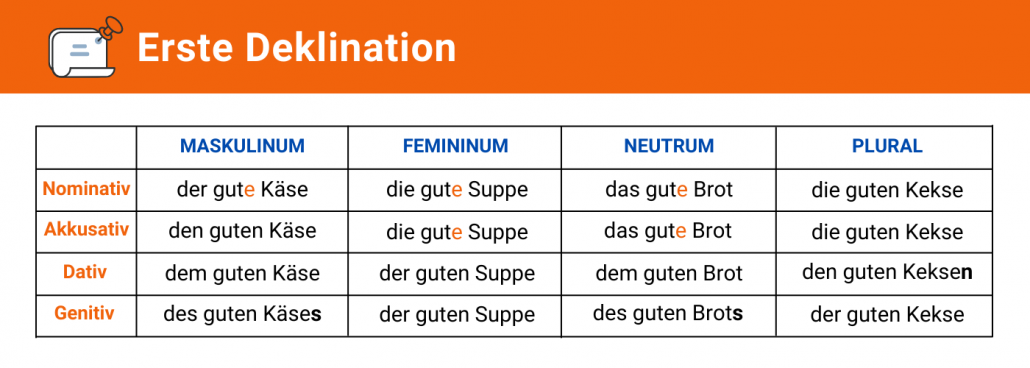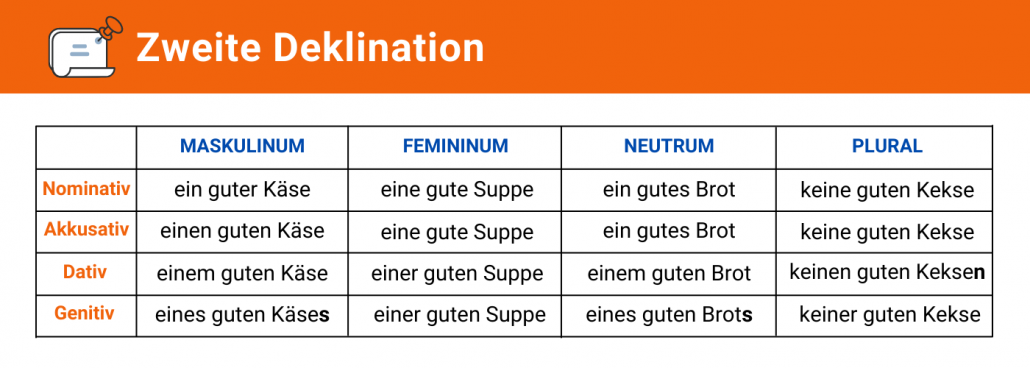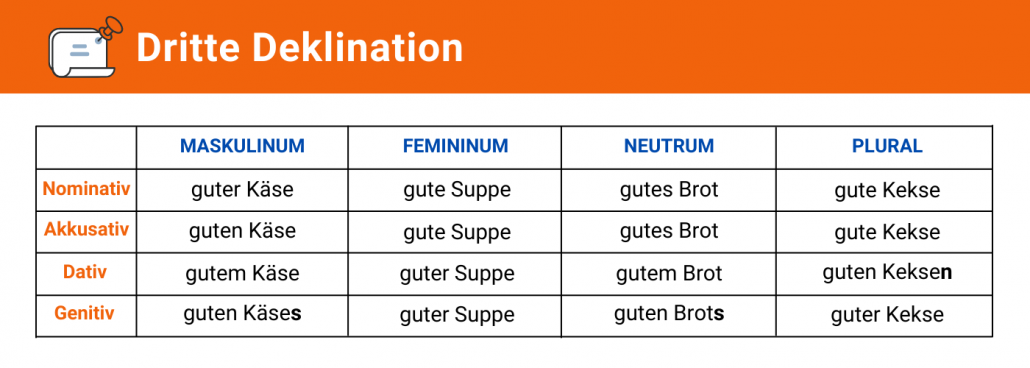Adjective declension in German
There are many factors to consider when declining German adjectives – But don’t panic! Berlino Schule is here to help you
Gute, guten, gutes, guter… do you ever find yourself wondering why the same adjective comes in so many forms? Adjectives are useful tools in a language since they can enrich a text or a speech. That’s why it’s important to know how to employ them. We are here to explain to you which things you should keep in mind when you use adjectives in German.
When should we decline adjectives?
To begin, adjectives should not always be declined. It depends on their position within the sentence. When they come after the noun (together with a verb), they are used in their basic form. For example:
Die Tasche ist blau. – The bag is blue.
Instead, if the adjective comes before the noun, it must be declined:
Die blaue Tasche. – The blue bag.
How to decline adjectives
To determine which ending the adjective should get, you should consider these factors:
- gender and number of the noun the adjective refers to
- case (Nominativ, Akkusativ, Dativ, Genitiv)
- what is in front of the adjective (definite article, indefinite article, no article…)
The last point, in particular, determines which one of the three possible declensions we should follow. In the following paragraph, we will show you these three declensions and when to use each one of them.
First declension
We use the first declension with definite articles: Der schwarze Tisch ist sehr schön.

This declension is also used with “dies…”, “welch…”, “jed…”, “all…”, “solch…” and “manch…”.
Ich mag diesen deutschen Kuchen.
Welches neue Geschäft liegt hier in der Nähe?
Ich liebe jedes italienische Gericht.
Manche billigen Sofas sind unbequem.
Solche einfachen Übungen sind für Anfänger ideal.
This first declension is pretty easy. In fact, in five cases the ending is E (they are highlighted in orange the table above), while in the remaining cases the ending is EN.
Second declension
The second declension is used with indefinite articles, with “kein…” and with possessive adjectives (e.g.: mein, dein, sein…).
Ich habe ein rotes Heft.
Mein rotes Heft ist auf dem Tisch.
Ich habe kein grünes Heft.

Third declension
We use the third declension when there is no article in front of the adjective. This is also used if the adjective comes after a number, “viele”, “einige” or “andere”.
Julia hat lange Haare.
Wir haben zwei junge Töchter.
Ich schreibe viele/einige lange E-Mails.

Let’s practice:
01. Das ist der neu…………….Deutschlehrer.
02. Die neu……………..Deutschlehrerin ist sehr nett.
03. In unserer Klasse ist eine neu………………………Schülerin.
04. Ich finde, gut………………..Freunde sind sehr wichtig.
05. Du musst vorsichtig sein, er ist noch ein klein………………Kind.
06. Er hat ein neu……………………Auto gekauft.
07. Sein neu…………………Auto steht vor der Haustür.
08. Meine klein…………………….Kinder gehen in den Kindergarten.
09. Die Adjektivdeklination mit bestimmt……………………….. Artikel kann ich schon gut.
10. Ich trinke gern deutsch………………….Wein.
Looking for a German course?
Have a look at our website! Berlino Schule offers German courses with qualified teachers at a very convenient price. Feel free to contact us at info@berlinoschule.com in case you need any information.
Our contacts
Gryphiusstraße 23, 10245 Berlin-Friedrichshain
+49 030 36465765
info@berlinoschule.com
